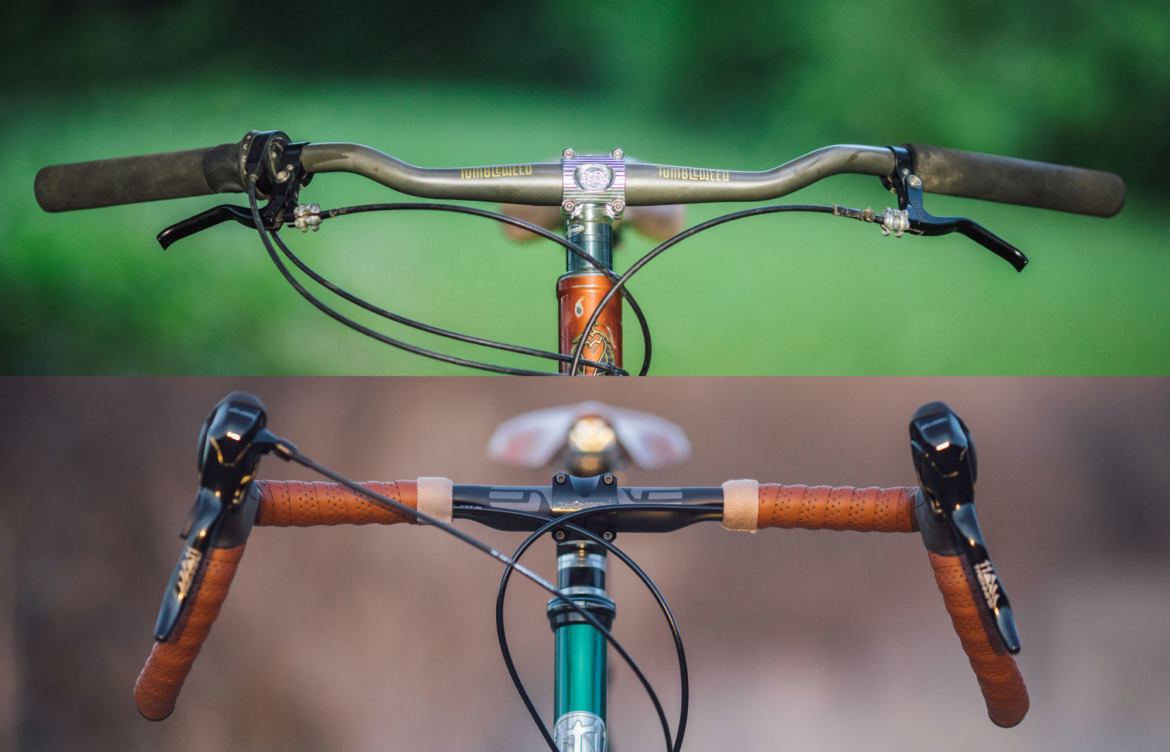
Drop Bar Bike vs Flat Bar Bike: How to Pick the Best Handlebar for Your Cycling Needs

When one delves into the realm of acquiring a new bicycle, the choice between the drop bar and the flat bar beckons contemplation. These handlebar variations, prevalent on diverse bicycles such as road bikes, mountain bikes, hybrid bikes, or touring bikes, prompt an inquiry into their distinctions and the optimal selection tailored to one’s riding predilections. This discourse aims to juxtapose the intricacies of drop and flat handlebar bikes, dissecting their merits and demerits to guide you in the nuanced decision-making process.
The Essence of Drop and Flat Handlebar Bikes

Drop bar bikes exhibit a distinctive curvature, forming a U-shape as the handlebars cascade downward at the extremities. Predominantly gracing road bikes, especially those oriented towards racing or high-performance pursuits, these handlebars proffer a trifecta of hand positions: on the hoods (adjacent to the brake levers), on the handlebars (the horizontal facet), and in the drops (the lower extension). Each posture carries its own advantages and drawbacks contingent on the riding scenario.
Contrastingly, flat handlebar bikes present handlebars that maintain a straight or subtly curved configuration, creating a horizontal alignment. Frequently adorning mountain bikes, hybrid bikes, or commuter bikes, these handlebars afford a singular primary hand position—on the grips located at the extremities. While this stance promises comfort and user-friendliness, it concurrently imposes limitations on versatility.
The Divergence: Pros and Cons
In navigating the maze of drop bar bikes and flat bar bikes, various factors like speed, comfort, control, aerodynamics, and versatility become pivotal determinants. Unraveling these factors unfurls a tapestry of nuances:
Speed:
- Drop handleBar Bikes: Exude swiftness, leveraging an aerodynamic posture that mitigates wind resistance during descents, flat terrains, or headwinds.
- Flat handleBar Bikes: Tend towards a more leisurely pace, adopting an upright position that increases wind resistance, especially in uphill climbs, rough terrains, or crosswinds.
Comfort:

- Flat handleBar Bikes: Champion comfort, fostering a relaxed and ergonomic posture that diminishes stress on the back, neck, shoulders, arms, and wrists.
- Drop handleBar Bikes: Lean towards discomfort, inducing a more aggressive and unnatural pose that heightens strain on the musculoskeletal system, notably during prolonged rides, intense cycling, or off-road escapades.
Control:
- Flat Bar Bikes: Elicit superior control, affording a broader grip, shorter reach, and enhanced brake leverage for heightened stability, maneuverability, and responsiveness—especially on rugged terrains or intricate trails.
- Drop Bar Bikes: Tend towards diminished control, necessitating a narrower grip, elongated reach, and reduced brake leverage, thereby compromising stability and responsiveness—particularly on uneven surfaces, sharp turns, or slippery pathways.
Aerodynamics:
- Drop Bar Bikes: Boast superior aerodynamics, assuming a lower and streamlined posture that diminishes frontal area and drag coefficient, culminating in a notable advantage during high-speed rides, level terrains, or against headwinds.
- Flat Bar Bikes: Present inferior aerodynamics, compelling a higher and exposed position that augments frontal area and drag coefficient, resulting in a disadvantage—especially during low-speed rides, uphill journeys, or tailwinds.
Versatility:
- Drop Bar Bikes: Exhibit heightened versatility, accommodating diverse hand positions suitable for varied scenarios and preferences—ranging from a balanced stance on the hoods for general or moderate climbs to a relaxed posture on the bars for leisurely rides.
- Flat Bar Bikes: Embrace limited versatility, confining riders to a solitary hand position on the grips, which, while comfortable for most scenarios and cyclists, can potentially induce monotony or fatigue without occasional posture adjustments.
Deciphering the Dilemma: Which One to Choose?
The verdict between drop bar bikes and flat bar bikes rests upon personal predilections, riding style, and specific requirements. A definitive answer eludes us, as both incarnations possess their unique attributes. However, navigating this conundrum becomes more lucid with some overarching guidelines:
- Opt for a drop bar bike if speed, efficiency, and performance reign supreme over comfort, control, and convenience. Ideal for road riding, racing, or touring, where aerodynamics and speed take precedence. Also well-suited for prolonged rides or endurance cycling, where diverse hand positions can stave off fatigue.
- Lean towards a flat bar bike if comfort, control, and convenience trump speed, efficiency, and performance. Tailor-made for off-road escapades, commuting, or leisurely rides, where stability and maneuverability hold sway. Also apt for short-distance or casual cycling, where a singular hand position can suffice for comfort and ease.
In Conclusion
In the wide array of handlebar choices gracing various bicycles, the dichotomy between drop bar bikes and flat bar bikes emerges as a focal point. Laden with their respective merits and demerits, hinging on variables like speed, comfort, control, aerodynamics, and versatility, the selection metamorphoses into a deeply personal endeavor. Whether your heart veers towards the streamlined dynamism of the drop bar or the laid-back comfort of the flat bar, may your cycling journey be joyous and secure! 😊
For all your biking needs check out Performace Bike’s website.
Read more such blog on LooperBay